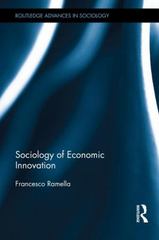Questions:,, please help tutors
Question 4 (20 points) This question considers a variant of the standard New Keynesian model where the government can now purchase a basket of goods Gr, which is completely funded by lump sum taxes. Assume that G, is not productive and does not provide utility. The linearized conditions are given below. In percentage deviations from steady state: 4 is consumption, w is the real wage, n, is hours worked, y, is output, , is real marginal cost and 9, is government spending. In deviations from steady state: 1, is the nominal interest rate, # is inflation. #, is the output gap (relative to the model with flexible prices): y = go - y". Households (9) (10) Firms (11) (12) it = BE(# +1) + Ky (13) " and of come from household preferences. 1/o is the clasticity of intertemporal substi tution and w is the inverse of the Frisch elasticity. & is inversely related to the degree of degree of price stickiness.' 0 1. Government spending, gr, follows an AR(1) process 91 = pgi-1 + et (16) where er is i.i.d. and 0 S p 1 (rather than o = 1). By inspecting the relevant household equilibrium conditions from part (a), discuss how this might affect the dynamics of consumption following a TFP shock. You do not need to re- solve the model, just provide the relevant economic intuition based on the equilibrium conditions. Let's compare the marginal utility of consumption when o > 1: M = COCK)- - BE, CHICT-(CHICTAY-] with the case where o = 1 de = 1 - Bh When o = 1, the marginal utility of consumption is actually very similar to the usual RBC model with log utility. As noted in part (c), a higher h affects the level of utility but lags and leads of consumption do not affect the marginal utility of consumption. By also using we can see that the consumption Euler equation will actually be the same as in the standard model without habits. Consumption growth is therefore not affected by habits when o = 1. When o > 1, this is no longer true and lags and leads of consumption affect the marginal utility of consumption and also enter the Euler equation. Consequently, when o > 1 habit persistence is likely to have a much larger effect on the dynamics (persistence) of consumption. c) Explain how you would solve this model using Value Function Iteration. Briefly mention any additional challenges that are specific to this model and how you might deal with them. For simplicity, assume labor supply is inelastic.b) Carefully define a recursive competitive equilibrium. c) Assume o = 1. Using guess and verify, find the policy functions for investment, consumption, hours worked and output and show that these are independent of C-1 (Hints: Guess that consumption and investment are a constant share of output. You will also find it easier to combine various equilibrium conditions from part (a) before applying the guess and verify method). How, and why, do TFP shocks affect output, consumption, investment and hours worked in this model?Question 3 (20 points) Consider the following decentralized real business cycle model. The representative household has preferences over consumption and leisure. Expected lifetime utility is: (1) 1 -0 1 + n where C is consumption and / is hours worked. These preferences include a form of habit formation and the "habit stock", H, is simply equal to consumption in ( - 1; He = Ct-1. h governs the importance of habits and 0 Sh










